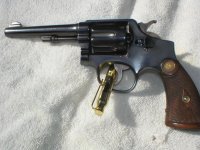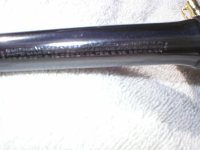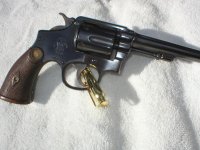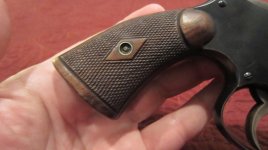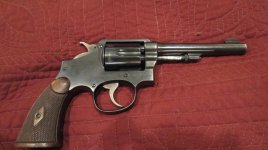Alk8944
US Veteran
tjpopkin,
What Jack didn't point out is the more likely production date of your (1939) revolver is 1928-1929. Any earlier and it would have had the large "Mushroom shaped" ejector rod knob (I can't get around calling it a LERK!). If any later the stocks would have had the large silver medallions instead of being smooth convex top.
The last shipping date for a Winchester Model was in 1965!
As Jack commented, very nice guns!
Badshot48,
From your posted photos your revolver has definitely appears to have been re-finished, although apparently a very good job. The color is a Nitre blue, wrong for the period this gun was built. It's just one of those "Doesn't quite look right" things from seeing a bunch of these over the years. If I am remembering the posted SN correctly (50,000 range) it would date from 1911-1912, although it may have shipped somewhat later.
What Jack didn't point out is the more likely production date of your (1939) revolver is 1928-1929. Any earlier and it would have had the large "Mushroom shaped" ejector rod knob (I can't get around calling it a LERK!). If any later the stocks would have had the large silver medallions instead of being smooth convex top.
The last shipping date for a Winchester Model was in 1965!
As Jack commented, very nice guns!
Badshot48,
From your posted photos your revolver has definitely appears to have been re-finished, although apparently a very good job. The color is a Nitre blue, wrong for the period this gun was built. It's just one of those "Doesn't quite look right" things from seeing a bunch of these over the years. If I am remembering the posted SN correctly (50,000 range) it would date from 1911-1912, although it may have shipped somewhat later.
Last edited:

